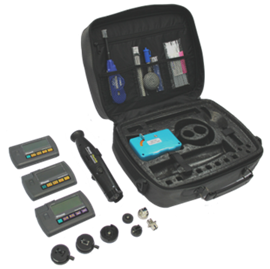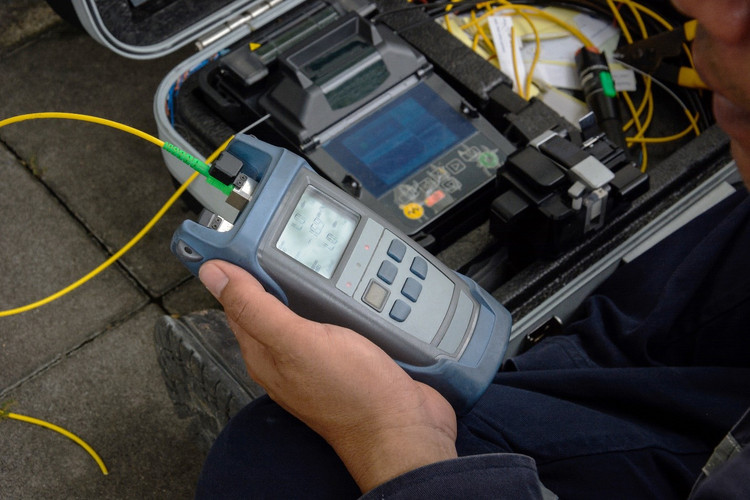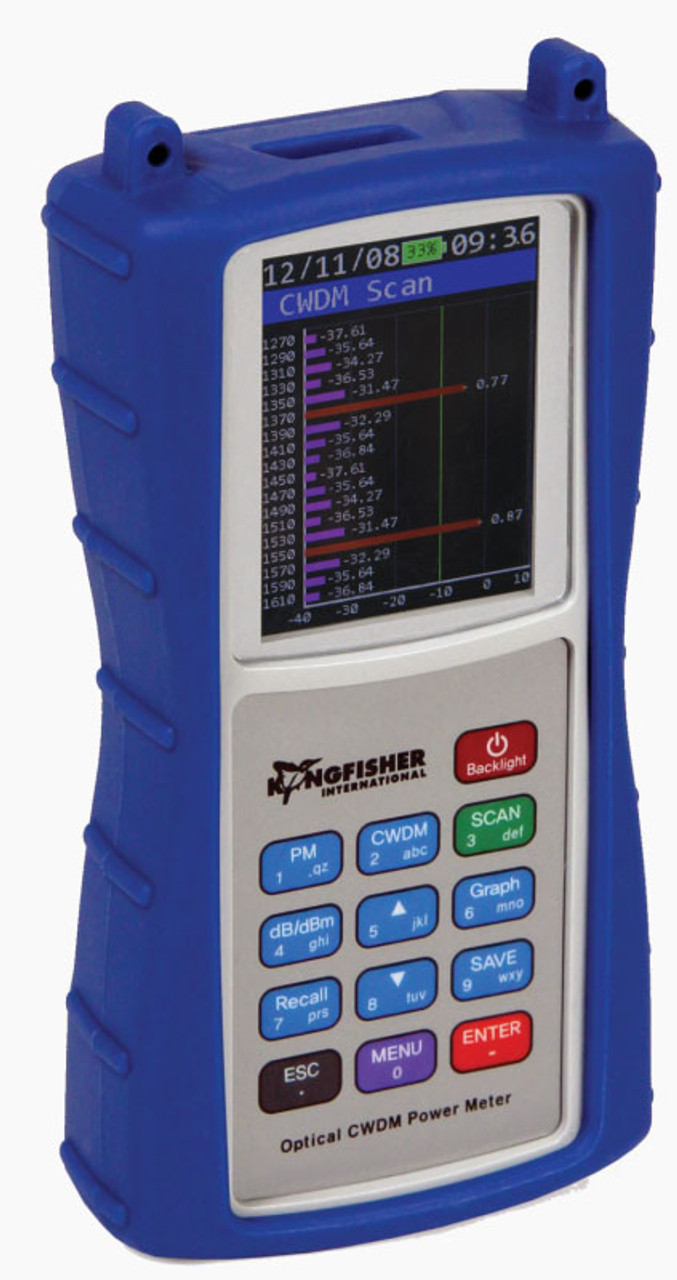
Whether it’s outside plant (OSP) infrastructure, links between equipment in the data center, or the backbone in a LAN, a light source and power meter (LSPM) test set is the most vital of all tools for testing an installed fiber plant. Most specifications require Tier 1 testing per TIA and ISO standards using an LSPM to calculate total insertion loss and length. And even if a specification calls for Tier 2 testing, which requires an
opticaltime domain reflectometer (OTDR) for determining insertion loss and reflection of individual connection points, final insertion loss testing still needs to be done with an LSPM test set that provides the most accurate overall channel loss testing.
Why do you need to test insertion loss and length with an LSPM test set? Insertion loss is the amount of energy that a signal loses over the length of a fiber link. It is directly related to the length of the links and also caused by any connection points along the link (i.e., connectors and splices). Specific fiber applications have a maximum channel insertion loss and length, and if the loss is too high, the signal cannot be properly interpreted by active equipment and the link will not function. That’s a pretty big deal when you consider that fiber links are the foundation of all networks.
When choosing an LSPM test set for your fiber testing, there are certain key features and specifications you need to know to make sure you can accurately, efficiently, and cost-effectively test installed fiber links for your projects.
Glass, Wavelengths, and Detectors Matter
When choosing an LSPM test set, you first need to know the type of fiber you need to test—multimode or singlemode. There are some LSPM test sets that may only test one type of fiber or the other, but ideally you want to choose one with the capability to test both multimode and singlemode. It’s pretty rare that you will only install one type of fiber for all your projects.
You also need to know what wavelengths your application requires and check your tester specifications to ensure they are supported by the light source. Most multimode applications operate at the 850-nanometer (nm) wavelength, but there are some multimode applications like BiDi and 400GBASE-SR4.2 that use wave division multiplexing (WDM) technology and also operate in the 900 nm to 1330 nm range. The most common wavelengths for singlemode
applications are 1310 and 1550 nm, but some WDM-based applications will operate at additional wavelengths between 1270 and 1650 nm. For example, 10 Gig passive optical network (PON) applications operate at 1270 and 1577 nm wavelengths, while 1 Gig PON operates at 1310 and 1490 nm wavelengths. For Wavelength Division Multiplexing (WDM) systems applications, you want a power meter that can quickly check loss on each wavelength.
One key factor when determining which fiber type and wavelengths are supported by an LSPM test set is the type of detector the power meter uses for measuring loss. A silicon detector type (abbreviated as Si) is really only suitable for multimode fiber for wavelengths to 850 nm, while a germanium detector (abbreviated as Ge) can effectively measure both multimode and singlemode wavelengths from 600 to 1650nm. A indium gallium arsenide detector (abbreviated as InGaAs) is the highest power option that is ideally suited for high-power, long-haul ER and LR singlemode applications. Power meters that use Ge detectors are ideal for the majority of installers needing to test multimode and singlemode fiber links in premise LANs and data centers.
Consider Connector Types
When it comes to choosing an LSPM test set, you also need to consider connector type. Many testers will include interchangeable adapters to support SC, ST, and FC connectors with a 2.5 mm ferrule and LC connectors with a 1.5 mm ferrule. If your cable plant uses angled polish contact (APC) connectors, you want to make sure that these connectors are supported.
If your network uses multi-fiber connectivity such as an MPO/MTP connector for parallel optic applications, you will want a power meter that features an MPO/MTP interface with the ability to test all fibers simultaneously. Testing MPO/MTP-based applications with a duplex tester is extremely time consuming and complex, requiring breakout test leads and testing one pair at a time. Some power meters will support only 12-fiber MPO/MTPs while others will support 12-fiber, 16-fiber, and even 32-fiber MPOs/MTPs.
Saving with the Whole Kit and Kaboodle
While light sources, power meters, and associated test leads and adapters can be  purchased separately, it doesn’t do you much good if you don’t have it all. Plus, when it comes to testing fiber, it isn’t just test with an LSPM test set and you’re done. Cleaning and inspecting fiber connectors is a vital part of the process. In fact, it’s recommended to clean, inspect, and then test. It’s also helpful to have a visual fault locator (VFL) on hand for when you need to troubleshoot your fiber network.
purchased separately, it doesn’t do you much good if you don’t have it all. Plus, when it comes to testing fiber, it isn’t just test with an LSPM test set and you’re done. Cleaning and inspecting fiber connectors is a vital part of the process. In fact, it’s recommended to clean, inspect, and then test. It’s also helpful to have a visual fault locator (VFL) on hand for when you need to troubleshoot your fiber network.
Unless you’re replacing individual components, it’s ALWAYS more cost effective to go with a full kit that includes everything you need to test multimode and singlemode fiber for all your installs—light source, power meter, interchangeable adapters for different connector types, inspection microscope, cleaning tools and materials, and a VFL. Plus, a kit makes it’s easy to carry everything you need into the field in one protective case. View our testing equipment from Kingfisher & Owl.
The good news is that Cables Plus offers a comprehensive line of fiber test equipment for all your fiber network testing applications—Telco, FTTX, data center, LAN or WAN—including a complete line of light source and power meter fiber test kits. We can help you find the right test equipment to suit your needs and budget. Just contact us at sales@cablesplususa.com.


